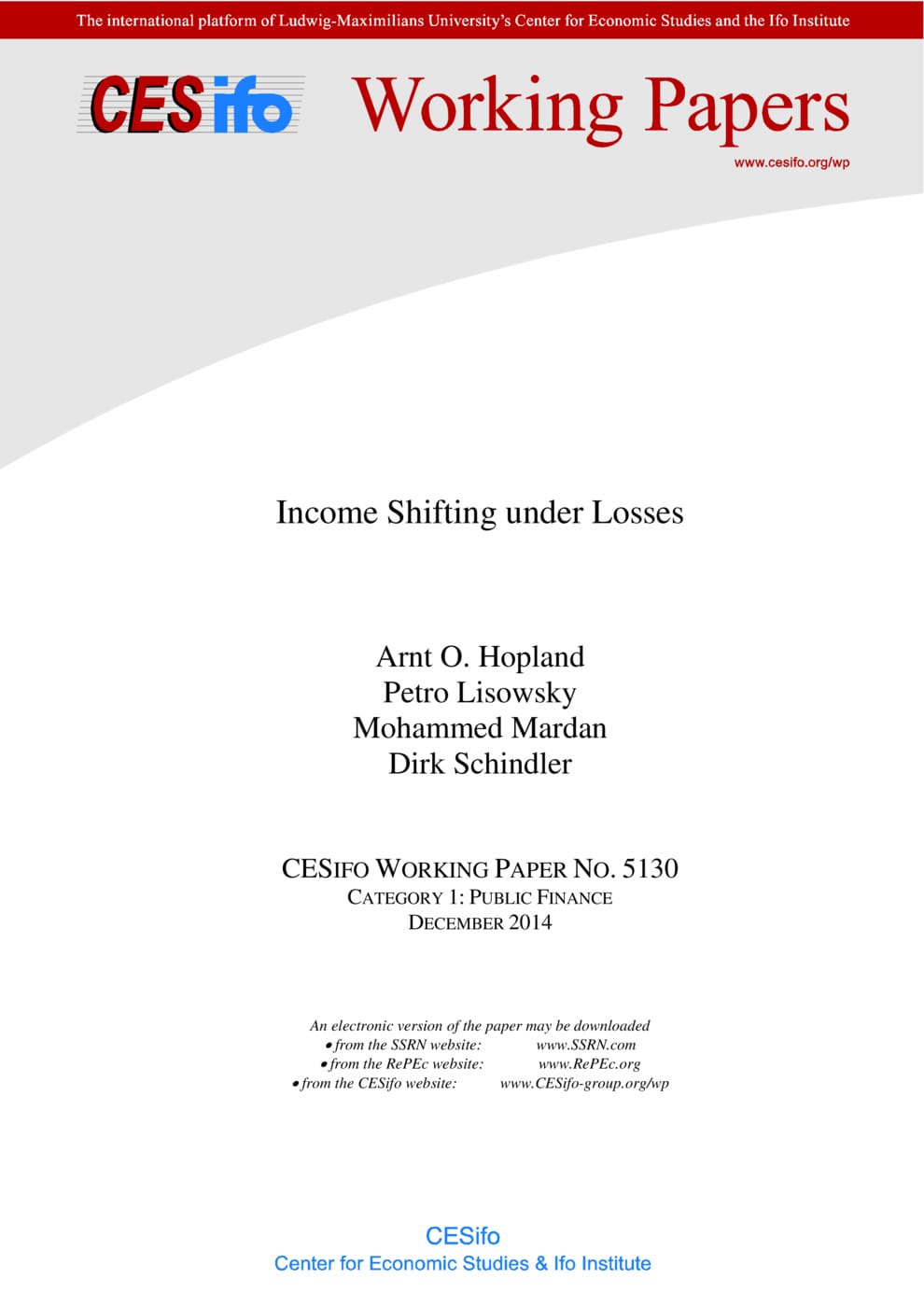Income Shifting under Losses
CESifo, Munich, 2014
CESifo Working Paper No. 5130

This paper examines the flexibility of multinational firms to use income-shifting strategies within a tax year to react to operating losses. First, we develop an analytical model that considers how affiliate losses can be adjusted by using the transfer prices of tangible and intangible assets, as well as internal debt shifting, either by ex-post (i.e., by the end of the tax year) or ex-ante income shifting (i.e., before the current tax year). Our model predicts that, due to income shifting, multinational firms report lower profits when running profits, and lower losses when running losses, compared to domestic firms. It also suggests that under ex-post income shifting, loss affiliates have lower transfer prices and internal leverage than profitable affiliates, whereas under ex-ante income shifting, affiliates feature the same transfer prices and internal capital structure, regardless of making losses. Second, using data on direct transfer payments and internal debt of Norwegian affiliates, we find empirical evidence that, under losses, transfer pricing gives substantial flexibility to adjust income shifting ex post. In contrast, we do not find evidence for flexibility in the use of internal debt to shift income ex post. We contribute to the literature that neglecting the precautionary income-shifting behavior of potential loss affiliates underestimates the sensitivity of tax rates to transfer payments and to internal debt, whenever some ex-ante income shifting is present.
Public Finance